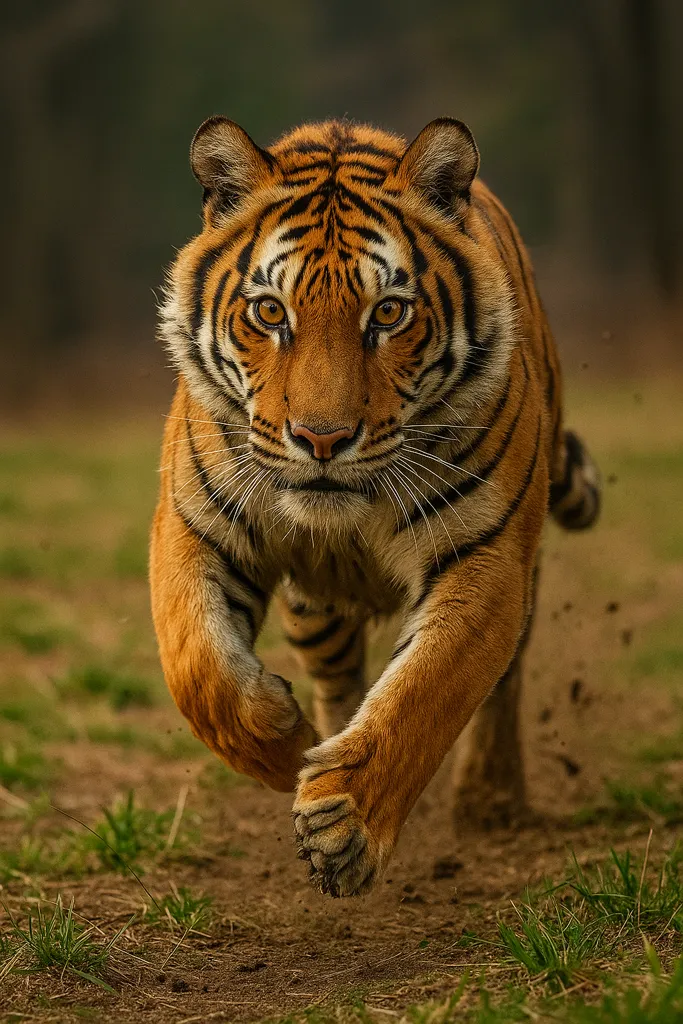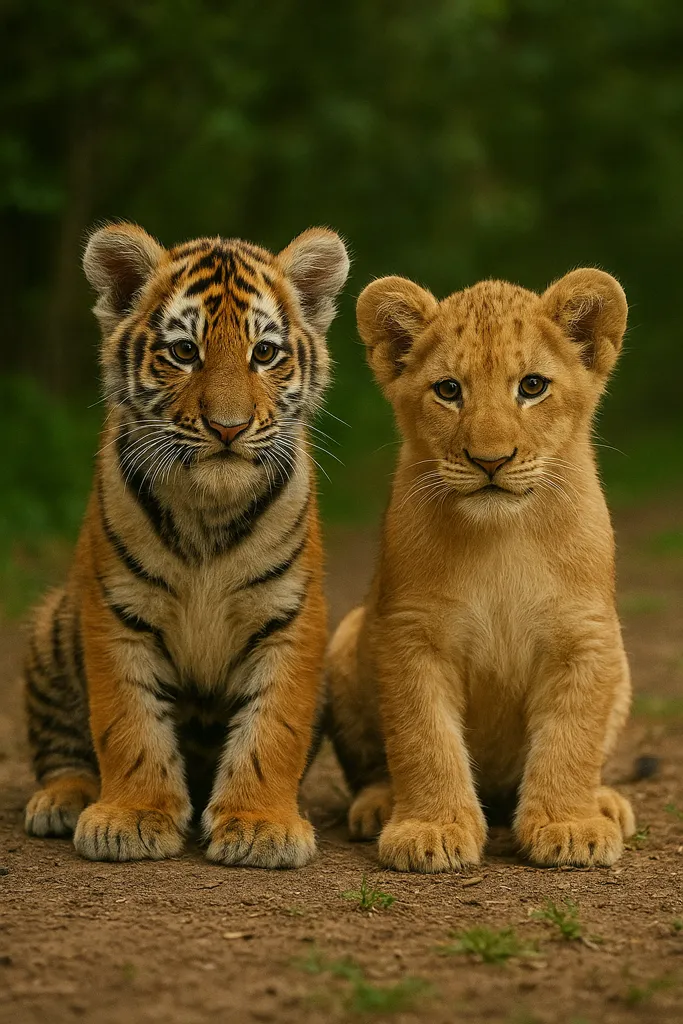Introduction
Tigers are iconic predators in the feline family. They display immense power and elegance. Moreover, their presence captivates observers worldwide. These creatures, classified as Panthera tigris, have a long history. They have roamed Earth for millions of years. Tiger evolution and habitat trace their origins to ancient times. Consequently, this history involves environmental shifts and challenges. Genetic adaptations shaped their survival. Thus, they became apex predators in diverse ecosystems.
This article explores their evolutionary journey. It covers behavior, habitats, and conservation efforts. Furthermore, the study relies on scientific research for accuracy. The goal is to enhance understanding of these big cats. Hence, the focus remains on detailed insights. Their story blends nature and human impact. Let’s begin with their origins now.
Largest among felids, tigers adapt to many habitats. They thrive in Asia’s dense forests and rugged taiga. Additionally, their orange coat with black stripes aids camouflage. This helps them blend into vegetation effectively. However, their numbers have dropped sharply over decades. Habitat destruction is a major cause. Poaching and human conflict also threaten them. Thus, their survival is at risk today.
What forces shaped their evolution over time? How do they cope with modern threats? What can ensure their future? Tiger evolution and habitat reveal their resilience. They face significant challenges now. Consequently, their story urges global action. Conservation efforts are critically needed. Let’s dive into their past.
Tigers reflect broader environmental issues. Their decline impacts biodiversity greatly. Moreover, studying them reveals ecosystem connections. Apex predators play a vital role. Thus, their preservation is essential. Their cultural significance is deep. It spans ancient myths to modern times. Let’s explore their evolutionary path further.
The cultural role of tigers is profound. They appear in myths across Asia. Furthermore, many cultures revere them as symbols of strength. Yet, their survival hangs in the balance. This contrast drives urgency for action. Hence, their study is vital for conservation. Their impact on humanity is notable. Let’s start with their history.

Evolution and Subspecies Diversity
Tiger evolution and habitat began with early felids. These ancestors emerged millions of years ago. Specifically, Pseudaelurus lived 20 million years ago. It roamed Eurasia as a small cat. Moreover, it hunted mammals and birds. This marked the start of the felid lineage. Thus, tigers trace their roots to this species.
Tigers diverged into Panthera tigris later. This happened around 2 million years ago. They evolved in the Asian continent. Consequently, abundant prey supported their growth. Genetic changes enhanced their muscles. They developed sharp senses too. Furthermore, they became skilled hunters.
Environmental shifts influenced their evolution. Grasslands expanded during the Pliocene epoch. Forests grew in the Pleistocene period. Thus, these changes provided new hunting grounds. Tigers developed stripes for camouflage. They grew robust limbs for strength. Moreover, their body size increased over time. Their jaws became powerful as well.
Their adaptations were key to survival. They hunted buffalo and young elephants. Additionally, senses like night vision improved. This helped them in low light. Tigers expanded across Asia. Consequently, they became apex predators. However, later threats emerged. Their range faced pressures.
Tiger subspecies diversity shows isolation effects. Nine types existed historically. Three are now extinct due to human activity. The Caspian tiger disappeared. Bali and Javan tigers followed. Habitat loss was the cause. Furthermore, hunting added pressure. Bengal tigers thrive in India today.
The Siberian tiger adapts to Russia’s taiga. It survives in cold forests. Thick fur protects it from frost. It preys on elk and wild boar. The Sumatran tiger is smaller. It hunts in Indonesia’s jungles. Moreover, its frame suits dense vegetation. Other types face survival risks.
This history highlights their adaptability. Tiger subspecies diversity reflects nature’s diversity. Extinction warns of human impact. Thus, their evolution provides context. It explains current struggles. Understanding aids conservation efforts. Consequently, let’s explore their behaviors next.

Behavioral Adaptations of Tigers
Tiger behavioral adaptations ensure hunting success. They are solitary apex predators by nature. Specifically, they hunt at dawn or dusk. This avoids the heat of day. Moreover, prey is active during these times. Stealth is their primary tactic. They hide in tall grass. A sudden attack follows swiftly.
Their jaws deliver powerful bites. They target the prey’s neck. Claws grip tightly during the hunt. Additionally, they can leap 10 meters far. Territory marking keeps rivals at bay. Tigers spray urine on trees. Furthermore, they scratch bark deeply. Scat leaves scent signals too. These warn others away.
A male’s territory spans 100 kilometers. Females have smaller ranges for cubs. Consequently, roars travel up to 3 kilometers. Tigers also growl and chuff softly. These sounds aid communication. Thus, they connect across distances. Their calls are essential for survival. Vocal variety is impressive.
Social bonds are rare among tigers. Mothers and cubs form a bond. Females birth 2-4 cubs at once. Gestation lasts about 100 days. Moreover, cubs stay with moms for two years. They learn to stalk prey. Pouncing is practiced daily. Hence, killing skills develop. Cubs leave to find territory.
They become independent hunters. Sensory skills boost their prowess. Tigers see well in the dark. Rod cells enhance night vision. Additionally, they spot movement easily. Their smell detects prey from afar. Hearing picks up rustling leaves. These traits fit their habitats. They thrive in swamps and forests.
Tiger behavioral adaptations evolved over time. They ensure survival in the wild. Solitary life reduces food competition. Thus, behaviors show great adaptability. Tigers are skilled predators. Consequently, their instincts are refined. These skills support their role. Let’s examine their habitats now.
Their hunting techniques are effective. These traits are critical for life. Moreover, they shape their dominance. Behavior ensures their success. It helps them thrive. Hence, their adaptations are vital. Let’s move to conservation challenges.

Habitat and Conservation Status
Tiger evolution and habitat changed significantly. They once roamed from Turkey to Siberia. Their range covered 10 million square kilometers. However, it’s now less than 7% of that. They live in 13 Asian countries. Specifically, habitats include Sundarbans forests. These are unique ecosystems.
Russia’s mountains host Siberian tigers. Sumatra’s jungles shelter others. Deforestation threatens these areas heavily. Agriculture and logging are causes. Additionally, urban growth fragments habitats. Tigers lose their living space. Consequently, populations become isolated. This reduces genetic health. Their survival is at stake.
Prey loss adds to their struggles. Deer and boar are over-hunted. Habitat loss cuts their food supply. Moreover, climate change hits Sundarbans. Sea levels rise steadily. This shrinks tiger territory. Human conflict grows nearby. Settlements encroach on lands. Tigers prey on livestock. Farmers retaliate often.
Poaching remains a serious threat. Illegal trade targets tiger parts. Bones and skins are sought after. Some cultures use them in medicine. Others value them as status symbols. This drives illegal hunting. Tigers face constant danger. Consequently, their habitats shrink fast. Conservation must act now. Protection is urgent.
Tiger conservation status is critical. The IUCN lists them as Endangered. This began in 2008. About 3,900 tigers remain wild. India has around 3,000 of them. Project Tiger started in 1973. It set up reserves. Anti-poaching patrols increased security. Moreover, habitats were restored. Assam and Madhya Pradesh saw gains.
Global efforts are growing stronger. The Global Tiger Forum leads initiatives. WWF partners in projects. They focus on habitat connectivity. Prey restoration is a priority. Furthermore, community education reduces conflict. Russia’s Siberian Tiger Project succeeds. It uses camera traps. Sumatra engages local villages. Tiger conservation status shows hope.
These efforts need more support. Habitat loss is a crisis. Conservation offers a solution. Thus, protecting tigers helps biodiversity. Their future depends on action. Consequently, let’s explore their ecological role. Their survival is a global concern. Let’s move forward to their impact.

Ecological Role of Tigers
Tiger ecological role keeps ecosystems healthy. They are apex predators by nature. They hunt deer and wild boar. This controls prey numbers. Overgrazing is prevented effectively. Forests can regenerate naturally. Moreover, biodiversity benefits greatly. Tigers are umbrella species. Their protection helps others survive.
Their kills feed many species. They leave carcasses behind. Vultures and jackals eat the remains. Hyenas benefit too. Smaller carnivores join in. Additionally, microbes break down leftovers. This adds nutrients to soil. Nitrogen helps plants grow. Sundarbans tigers hunt fish. They affect aquatic chains as well.
Without tigers, ecosystems suffer. Prey grows too numerous. Overgrazing destroys vegetation. Soil erosion increases rapidly. Moreover, smaller species lose habitats. Other predators face competition. Southeast Asia shows this trend. Degraded forests lose diversity. Tigers are vital for balance.
Conservation maintains this stability. Rewilding brings tigers back. Prey restoration supports their needs. India’s Ranthambore Park succeeded. Tiger numbers rose there. Consequently, forests stabilized. Prey behavior changes too. They avoid tiger areas. Vegetation grows better. Tiger ecological role is broad.
Their impact supports biodiversity. They connect food webs tightly. Protecting them helps nature thrive. Tigers show ecosystem health. Their loss harms many species. Thus, conservation is crucial. Their role shapes forests. It affects Asian landscapes. Let’s reflect on their significance now.
Predation drives ecological health. Conservation preserves their impact. Moreover, their presence matters. Their absence disrupts balance. Hence, their role is key. Let’s tie their story together. Their influence is far-reaching. Let’s conclude with insights.

Leave a Reply